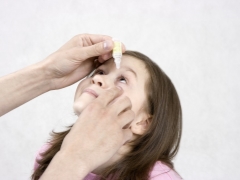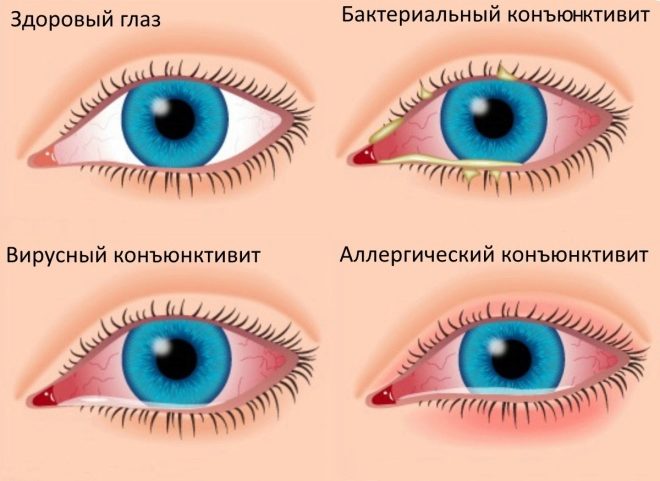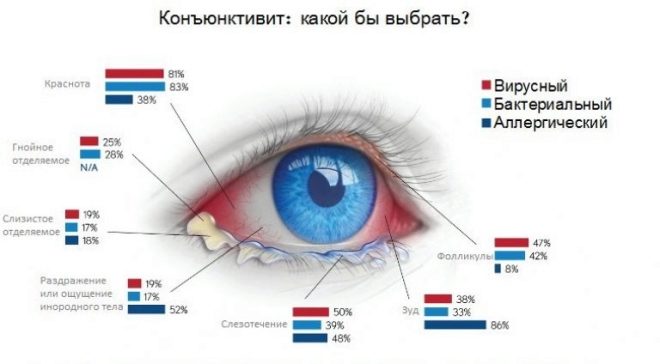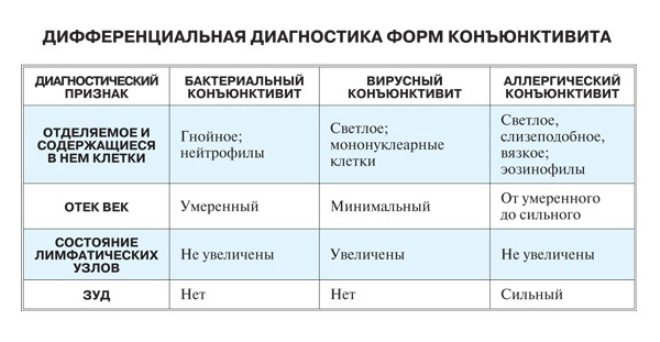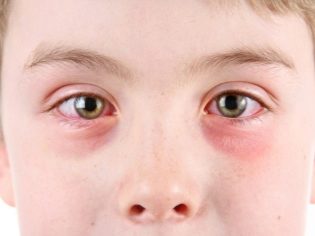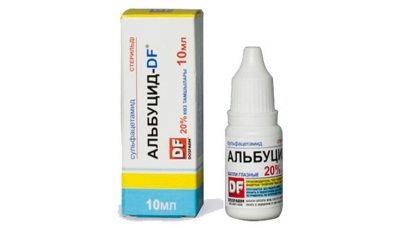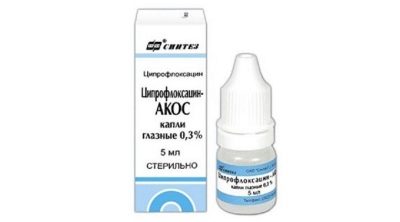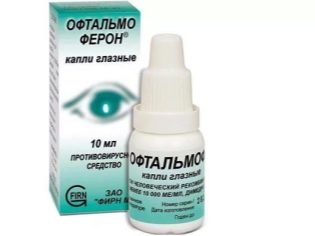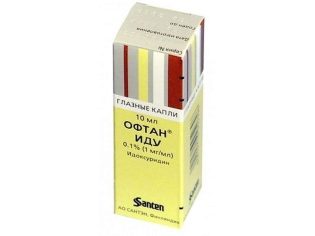Drops for children with conjunctivitis
Conjunctivitis of various etiologies is a fairly frequent disease of children. In almost every family, parents can meet with this disease. Sick kids of different ages. Appointment of the correct treatment is a prerequisite for the rapid elimination of adverse symptoms of the disease.
How is it developing?
The development of the disease begins after exposure to a certain external factor. The reasons that lead to the development of inflammatory diseases of the mucous membrane of the eyes, there are more than a hundred. Manifestations of the disease, as a rule, are similar - even with different types of pathogen. Prescribing treatment is carried out strictly after establishing the cause.
Conjunctivitis in pediatric ophthalmic practice most often occurs when:
- Various infections. In most cases, these are viruses or bacteria. Once in the body, they multiply very quickly and cause an inflammatory process. When carried with the bloodstream throughout the body, pathogenic microorganisms provoke inflammation in many internal organs. A well-supplied blood conjunctiva is quickly involved in the inflammatory process, and characteristic symptoms of the disease appear.
- Traumatic eye damage. Kids, especially younger ones, often taste the world around. It is very easy to get a child’s eye injury. The mucous membrane in babies is too vulnerable for any traumatic injuries. It is quickly damaged and conjunctivitis occurs.
- Allergic reactions. Conjunctivitis is one of the main symptoms of allergies. Upon contact with the allergen, the mucous membrane of the eye becomes inflamed and the classic symptoms of conjunctivitis appear. Allergic conjunctivitis due to individual hypersensitivity may occur throughout the year. To do this, just enough in the body of the substance is an allergen.
- Chronic diseases of the middle ear and nasopharynx. Children with chronic otitis or sinusitis may also have conjunctivitis. This is due to the feature of the blood supply to the organs on the face. The proximity of the anatomical zones increases the likelihood of conjunctivitis. In such cases, the main disease that provoked the inflammatory process should be treated.
After exposure to an external cause, the body starts an inflammatory process. Reaching the mucous membrane of the eyes, biologically active substances affect the cells and provoke the appearance of symptoms characteristic of conjunctivitis:
- lacrimation;
- feeling of a foreign body or "sand" in the eyes
- severe redness of the eyes;
- suppuration (with bacterial forms of the disease);
- soreness when opening eyes;
- photophobia and increased susceptibility to sunlight.
Symptoms in conjunctivitis occur rapidly, causing the baby expressed anxiety and discomfort.
Children try to open their eyes as little as possible, blinking more often. Toddlers are becoming more capricious, appetite, as well as sleep. Habitual favorite activities no longer deliver positive emotions.
In order to eliminate the adverse effects of the disease, prompt treatment is required.
The basic principles of treatment
Conjunctivitis is quite a dangerous disease. Purulent forms of the disease are relatively hard and require the quick appointment of the correct treatment.The prescription of drugs is carried out by an ophthalmologist after examining the child and conducting additional examinations. For the treatment of purulent conjunctivitis requires the use of antibiotics.
Any form of inflammatory eye disease involves the following therapeutic measures:
·
- Mandatory compliance with the regime of the day and rest. DFor the rapid recovery of the child's body requires a full sleep. Toddlers under five must sleep at least 10 hours a day. Sick kiddies recommended daytime sleep. During this rest, the mucous membrane of the eyes recovers faster and heals. In the first days of the disease it is better to close the curtains in the room. A child with acute conjunctivitis is much more comfortable in a dark room.
- Hygiene procedures. Sore eyes should be washed. For this you can use warm boiled water. You can also do such washes using a decoction of chamomile or furatsilina. Wipe eyes should be in the direction from the outer corner of the eye to the inside. So you will not carry the infection and remove all remnants of the eye. The procedure is prescribed for 10 days 3-4 times a day.
- Prescription drugs. The choice is made by the doctor. It is not recommended to select the drug yourself. If used improperly, the baby may have adverse side effects instead of a positive effect. For the treatment of conjunctivitis used medicinal ointments and children's eye drops. In the treatment of severe forms of bacterial infections, injections or antibiotic pills are prescribed. The dose, frequency and duration of the course is chosen by the attending physician.
- Limit walks in the first few days after the onset of conjunctivitis symptoms. The bright rays of the sun can additionally injure the damaged mucous membrane and enhance tearing. Walk better after subsiding inflammatory process. In the summer, try to cover the face of the baby from bright sunlight.
What eye drops are used?
For the treatment of conjunctivitis used various drugs. The ability to use different forms of drug release helps to quickly cope with the adverse manifestations of the disease and speed up recovery. Most often, doctors prescribe eye drops.
In composition, they may be different. For infectious conjunctivitis, drops are prescribed that have a bactericidal effect. A drug can have a detrimental effect on certain types of bacteria. If it kills several different forms of pathogenic microorganisms at once, then the medicine has a wide spectrum of action. These drops include "Tobrex». Using medication will help to deal with the symptoms of most infectious conjunctivitis. Appointed, as a rule, for a period of 5-7 days.
For babies from the first days after birth, use "Albucid". This drug fights various types of staphylococci. It is used even in maternity homes (for the prevention of gonorrhea in newborn babies). The drug is time tested and has a minimum of side effects. It is applied by the course (as prescribed by the doctor).
Antibiotic eye drops are also very successfully used in the treatment of various inflammatory eye diseases. Doctors may prescribe "Ciprofloxacin». This drug also has a wide spectrum of action against many pathogens. Assigned to a course of up to 7 days. Longer admission is possible only on the recommendation of a doctor. Children under the year do not prescribe such eye drops.
If conjunctivitis has viral nature, in this case, the appointment of special antiviral drugs is recommended. These may be eye drops. ”Ophthalmoferon». The drug has proven itself in the treatment of various forms of viral eye diseases.You can also use "Oftan Ida." However, it should be remembered that these medicines can not be used for children under two years of age.
When buying eye drops, be sure to pay attention to the shelf life. Expired drugs are strictly prohibited to use! Note which eye drops must be stored. in a refrigerator. Usually such preparations warm up to a comfortable temperature before instillation.
All open medicinal eye drops must be stored according to the instructions. After this time you should not use them.
The use of eye drops in the treatment of conjunctivitis is an important therapeutic procedure. Course application of such drugs allows in a fairly short time to get rid of all the adverse manifestations of the disease and contributes to the rapid recovery
How and how to treat conjunctivitis in children - see the transfer of Dr. Komarovsky.
